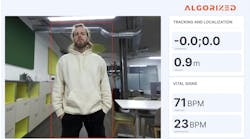Often, when we are moving loads in a two-dimensional plane such as is required for pick & place, sorting, loading, assembly, and other material handling tasks, we’ll find we need actuators capable of high-speed motion and greater loading capacity.
In these circumstances, common in industries such as packaging, food & beverage, and automotive, we should take advantage of features that can be found in multi-axis electric linear robot actuators. Not only do they present distinct advantages over traditional linear actuator-based systems, but they are also more accurate and repeatable than gear-driven actuators and just as precise as ball-screw actuators.
Such linear robots feature dual-access construction with a single belt that serpentines around both axes. Two coordinated motors and the X-axis eliminate the need for motors on the Z-axis. With the elimination of the motor in the Z-axis, cable tracks and cable management are no longer an issue, saving time and money and costly components, along with expensive repairs.
Electric linear robots employ distinctive high-precision, steel-reinforced arc-belt power designs, that result in self-aligning and self-tracking, making them more precise and repeatable than traditional straight-tooth belt designs.
Advantages and benefits include coordinated motion control for complex motion profiles including circles, ellipses, sine wave, and other complex motions.
Ultimately, electric linear robots will reduce vibrations, eliminate backlash and cogging, and obtain higher thrust per unit size. That leads to a longer performance life, shorter downtime, and less maintenance.











